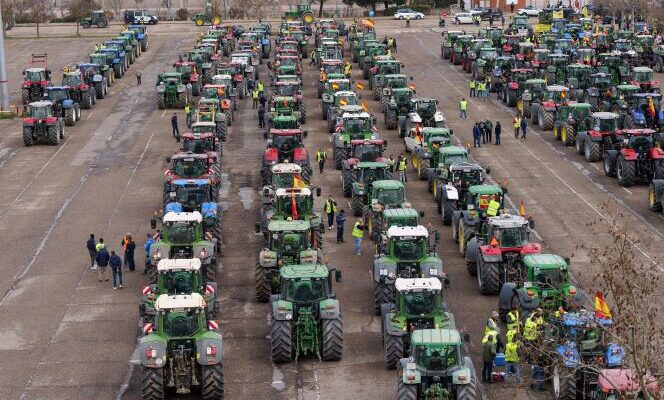The Commission speaks of simple “adjustments” to reduce the administrative burden on farmers. But it is indeed a rewritten version of the common agricultural policy (CAP) that the European body presented and adopted on Friday March 15, and which would modify several rules. An express review, without impact study and after a consultation “one week” with four agricultural organizations and member states, in response to the agricultural protest movements that have been shaking Europe since the end of 2023.
The European Union’s leading expenditure item, with 58 billion euros in aid distributed each year (including 9 billion for France), the CAP could see the rules for granting aid evolve substantially if the revision – which will have to also be approved by the European Parliament and by the Member States – successful. The Commission proposes to review in particular the principle of conditionality of direct aid, which had been negotiated for three years to apply over the period 2023-2027, and rewrites and softens three of the eight “good agricultural and environmental conditions” (GAEC), that farmers must observe to receive direct aid.
- Agroecological infrastructure
This is an important point of tension. The obligation to dedicate part of agricultural land to “agroecological infrastructure” – areas favorable to biodiversity (hedges, ponds, trees, land left fallow) and areas dedicated to nitrogen-fixing crops, such as legumes, and intercropping – would be lifted, according to the Brussels proposal. This obligation had already been temporarily relaxed after the start of the war in Ukraine, and a new derogation for 2024 granted at the start of the year by the Commission. This time, the European executive is proposing to permanently remove this obligation.
“The scientific literature is extremely robust on the fact that an agricultural landscape that does not have a minimum amount of semi-natural infrastructure does not “do the job”says Pierre-Marie Aubert, researcher specializing in agricultural policies at the Institute of Sustainable Development and International Relations. We can have discussions on the conditions of implementation, but removing this obligation is emblematic of the fact that we are making fun of biodiversity. he adds.
For many environmental organizations, this measure goes against agricultural needs. “We are sacrificing infrastructure which is essential for the resilience of farms, recalls Thomas Uthayakumar, director of programs and advocacy at the Foundation for Nature and Man. Fallows improve the quality of the soil, hedges provide windbreaks and encourage birds which help fight pests… These devices create virtuous loops. »
You have 63.38% of this article left to read. The rest is reserved for subscribers.
